Did you feel it this week, that first hint of fall? Fortunately, the bugs haven’t seemed to notice yet, and we’re seeing lots of cool critters around. But don’t take our word for it, go see for yourself – visit the Rocky Mountain Gardens, get out in the woods, or just spend some time poking around in your own backyard. Let us know what you find!
Submit your bug pictures to bugid@missoulabutterflyhouse.org and remember to include your name, the date, and the location where you took the photo!
Header photo: Paddle-tailed Darners (Aeshna palmata) are one of the most common darners in Montana and can be found across the entire state. They tend to inhabit lakes and ponds that have dense shoreline vegetation as well as marshy areas, fens, and slow-moving streams and sloughs. Darners are incredibly fast and agile hunters, catching a wide variety of flying insects in midair – mosquitos, moths, flies, flying ants…even smaller dragonfly species. – Alexia Cochrane, July 29, 2025, Ravalli County, MT
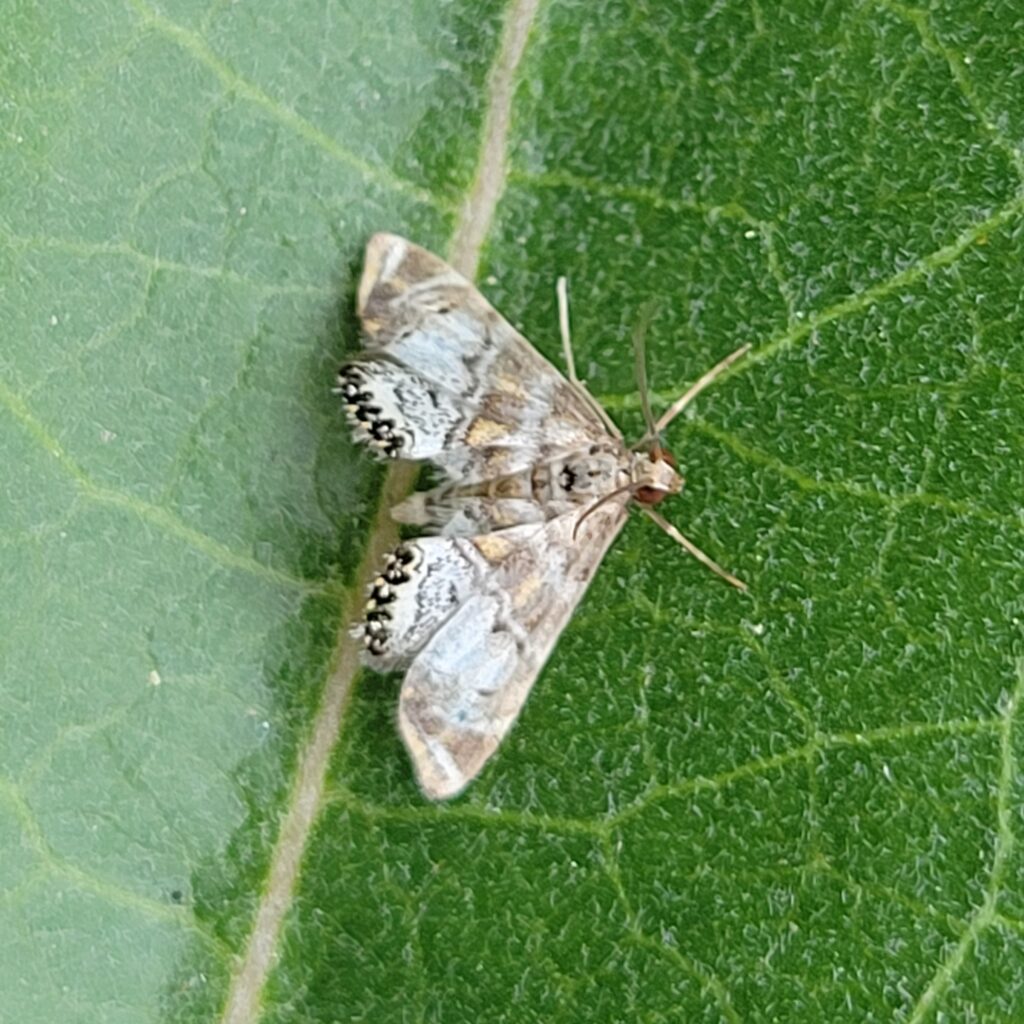
Confusing Petrophila
Petrophila confusalis
These small and beautiful moths are quite unique: rather than feeding on terrestrial plants like most other moth caterpillars do, larvae of the Confusing Petrophila feed on algae on rocks in fast moving streams. Adult females enter the water – diving up to 13 feet deep – to lay 200 to 300 eggs. They carry a shell-like layer of air on their body allowing them to breathe under water for 4 to 12 hours; once the eggs are laid, the female typically dies. Listen to our Bug Bytes podcast to learn more about this semi-aquatic lepidopteran.
Klara Briknarova, July 26, 2025, Blackfoot River Corridor, MT
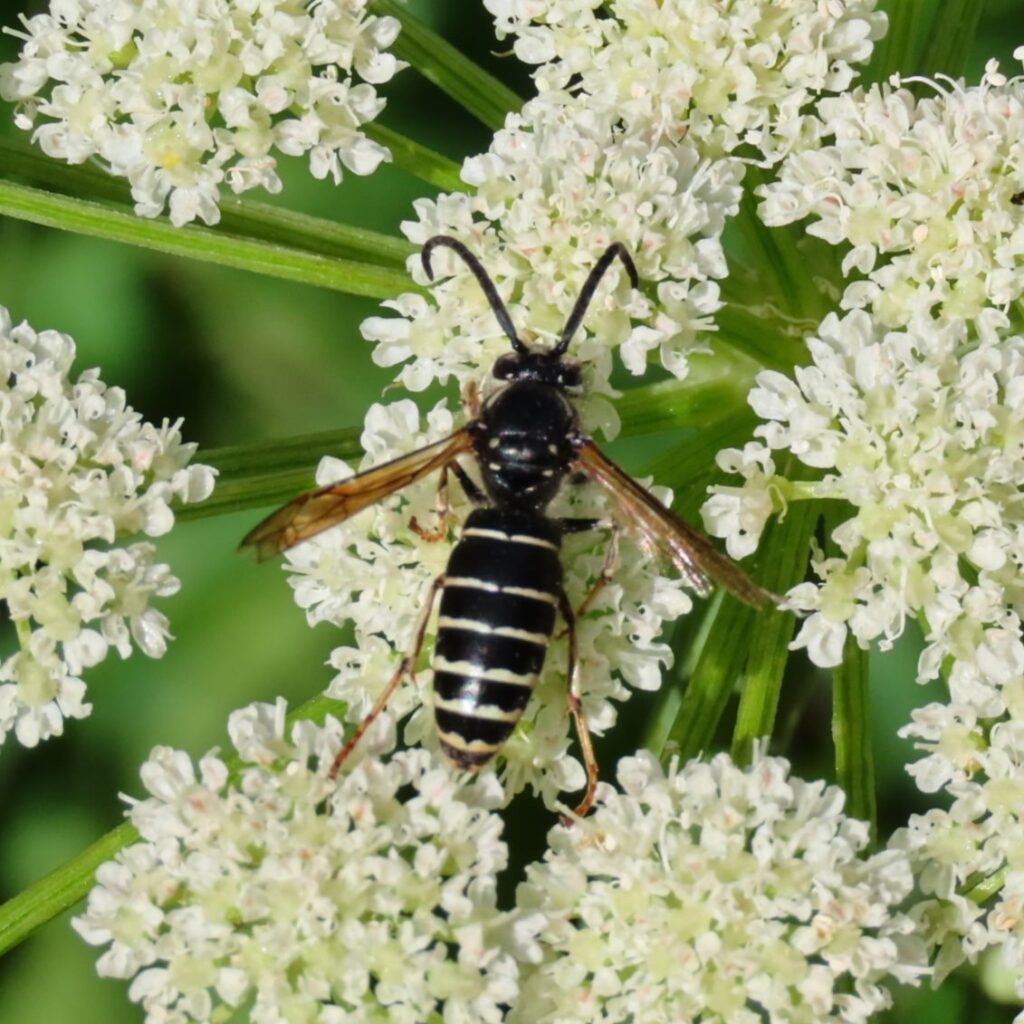
Parasitic Aerial Yellowjacket
Dolichovespula arctica
The Parasitic Aerial Yellowjacket is an obligate social parasite of other yellowjacket species in the same genus, and is found throughout much of the western and eastern U.S. and Canada (although it is largely absent from the Midwest). It has no worker class, but instead relies on workers from the host species to rear its young. A female will invade a colony of its chosen host, kill the colony’s queen, then proceed with laying eggs that the host workers will rear.
Kelly Dix, July 28, 2025, Superior, MT
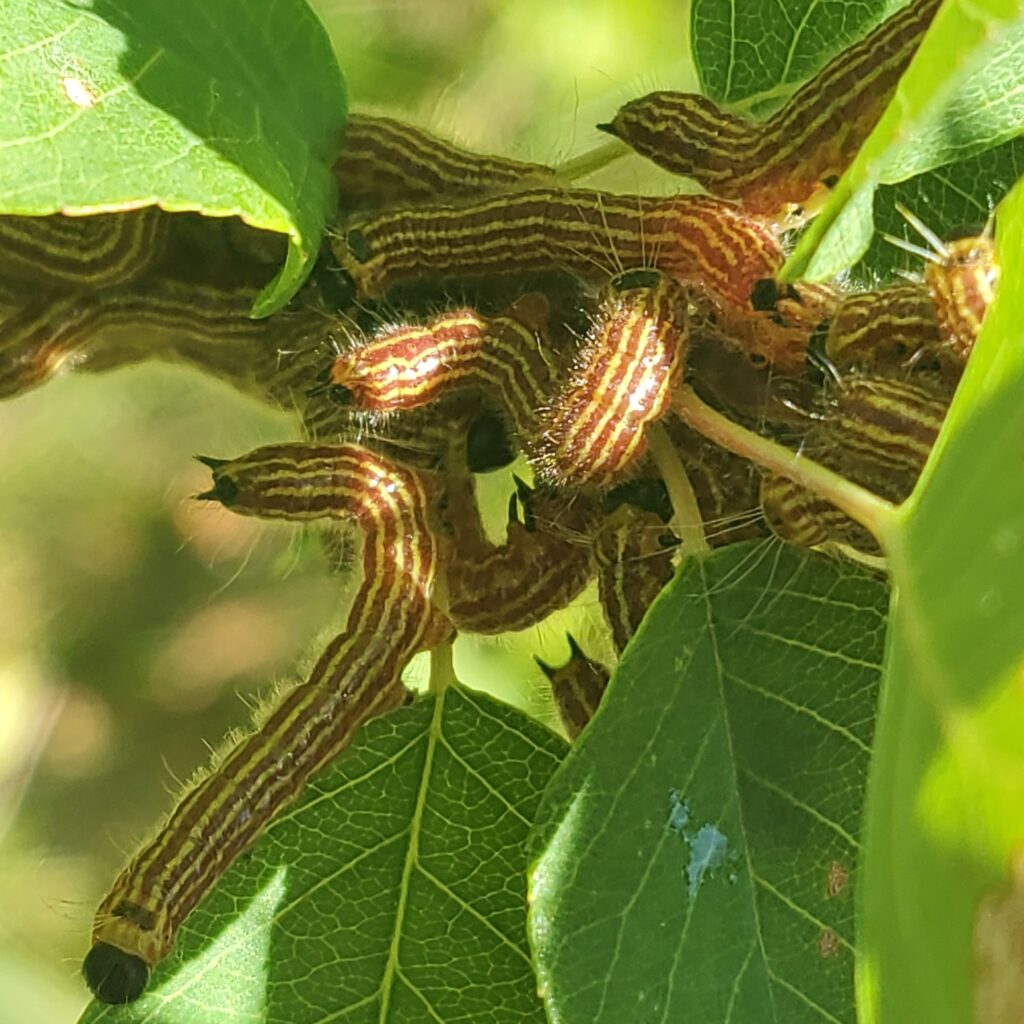
Prominent Moth Caterpillar
Datana sp.
We believe this caterpillar belongs to the Datana genus, of which there are only a few species in our area. As an adult, species in this genus look like a dead, rolled-up leaf; an excellent form of camouflage to protect them from becoming lunch. Larvae feed on the leaves of deciduous trees and shrubs and can become pests when numbers are high. The genus name, Datana, is an anagram of two other moth genera, Natada and Nadata; all three were described by Francis Walker in 1855.
Sal Culotta, July 29, 2025, St. Ignatius, MT
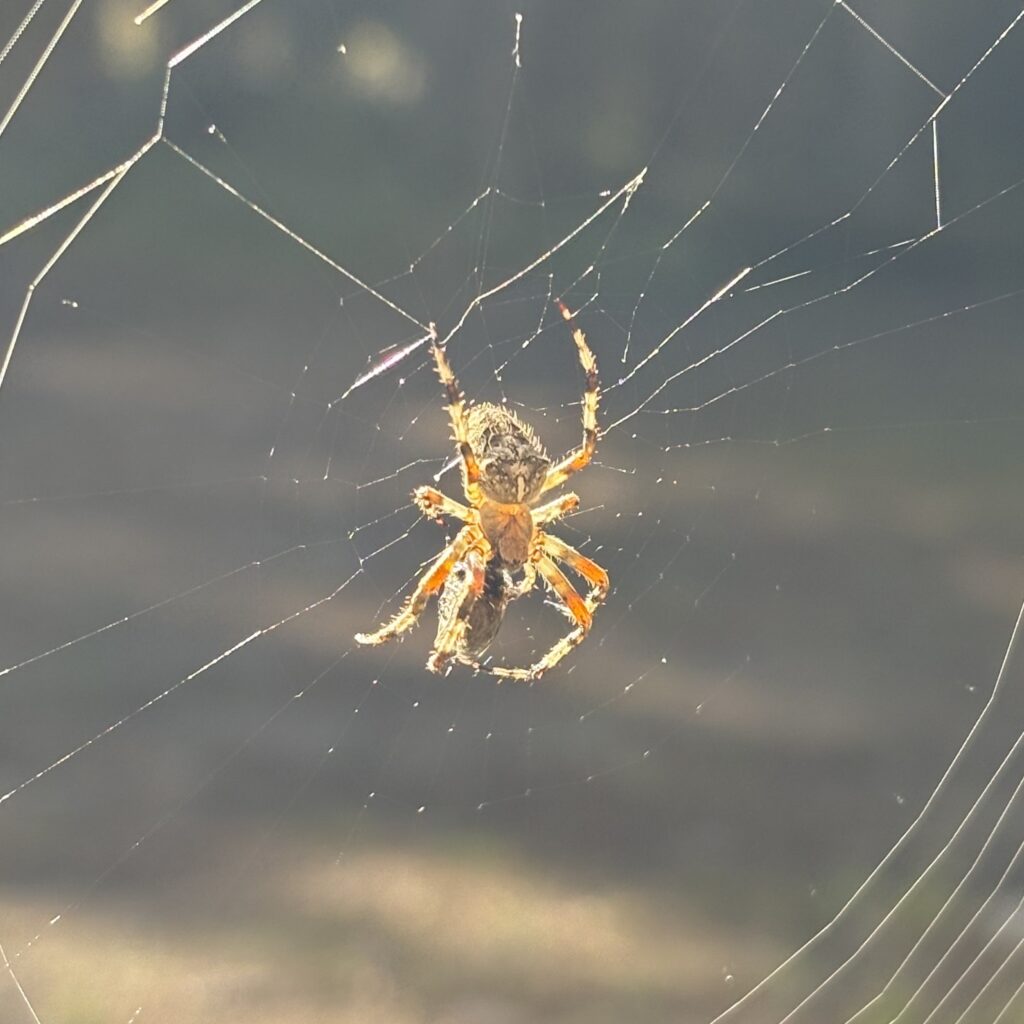
Nordmann’s Orbweaver
Araneus nordmanni
This large, stunning orbweaver is found throughout western North America and the northeastern United States, and has also been observed across Europe and Asia, but is largely absent from the Great Plains – likely because it prefers forested habitats. Its underside is flashy, perhaps as an attempt to startle predators, but the top of its body blends perfectly with the bark of the trees it uses to anchor its web. When threatened, it retreats to the tree trunk and disappears against the bark.
Corrie Kegel, July 30, 2025, Bowman Lake, Glacier National Park, MT
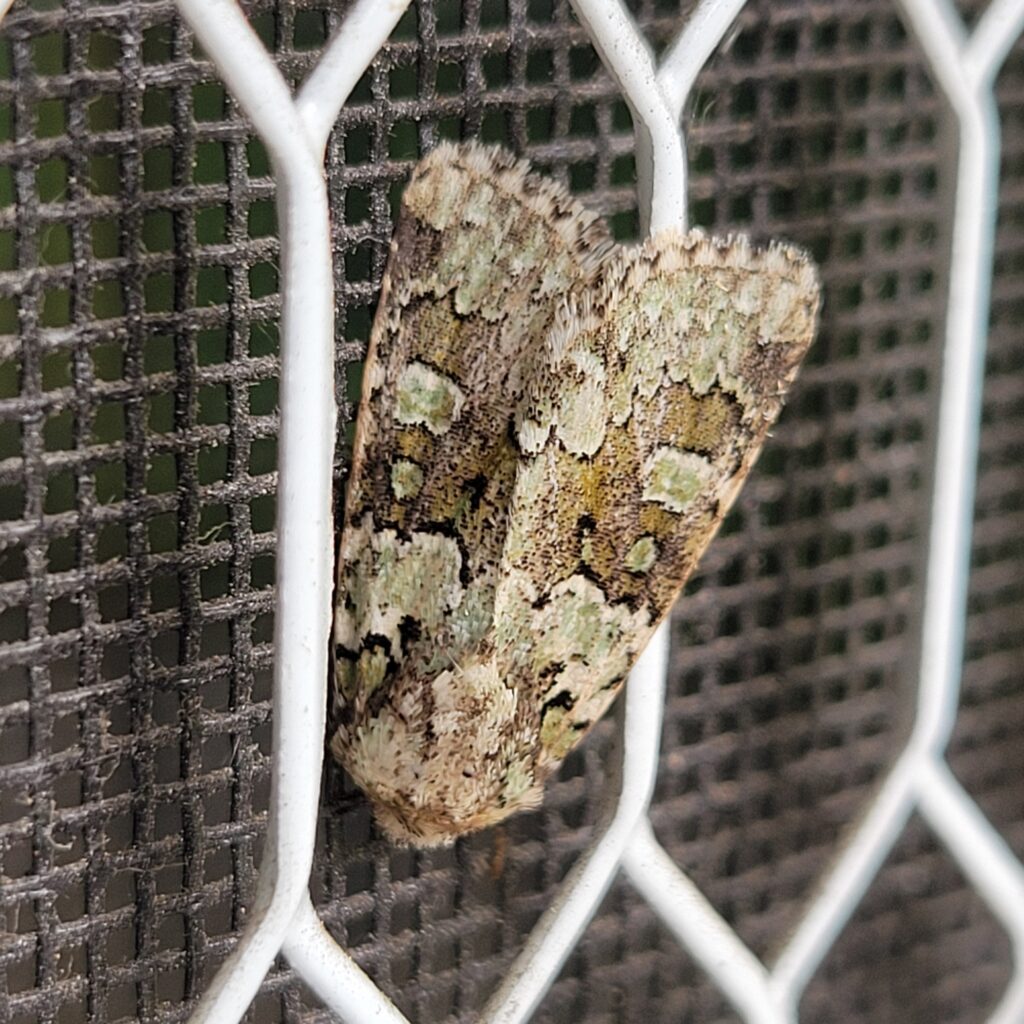
Collared Arches Moth
Lacinipolia strigicollis
Collared Arches are on the wing during late summer and fall, typically from mid-July to early September. You may spot one sipping nectar at the blossoms of Rubber Rabbitbrush (Ericameria nauseosa) in the early evening or near your outdoor lights. Larvae are climbing cutworms that feed on various herbaceous plants in families such as aster (Asteraceae) and pea (Fabaceae). This species of moth is common and widespread across western North America, from British Columbia and southern Alberta to Texas, California, and even Mexico.
Klara Briknarova, August 2, 2025, Missoula, MT
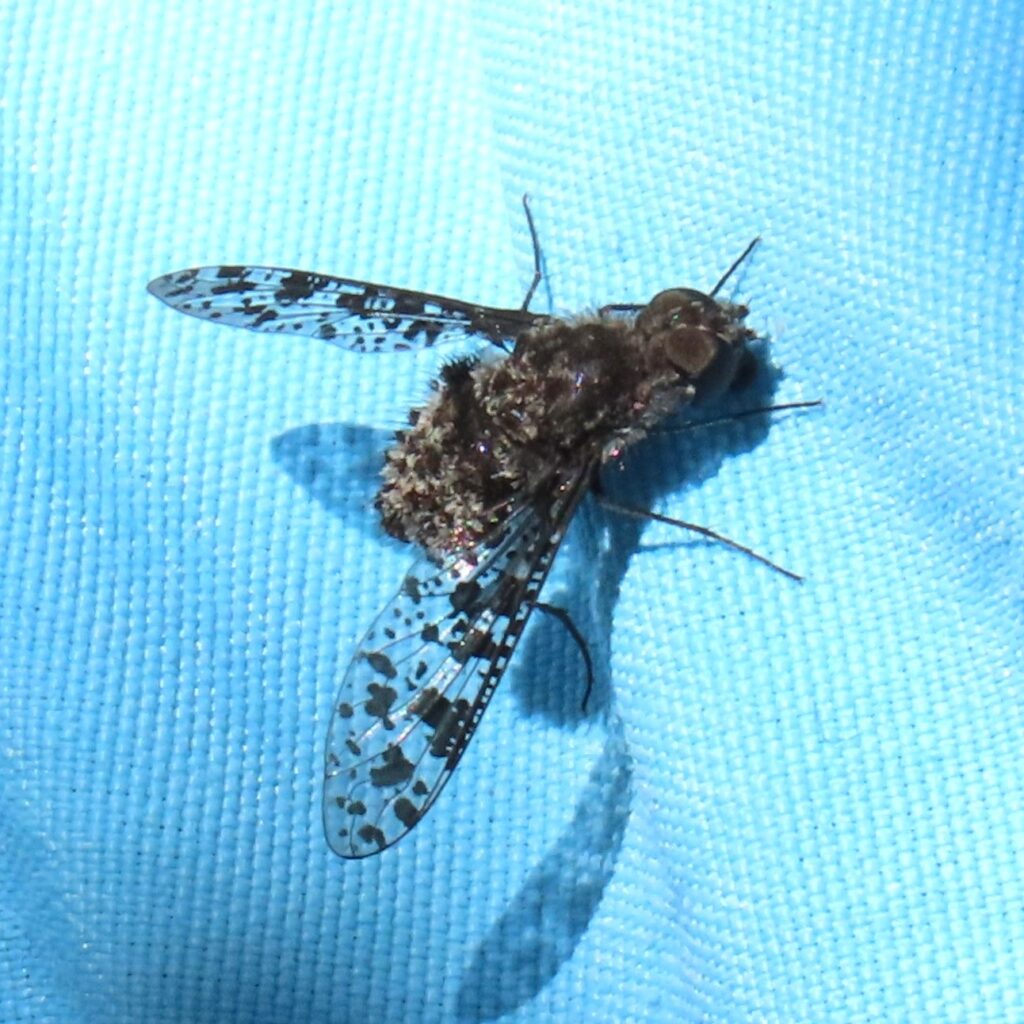
Spotted Bee Fly
Anthrax irroratus
The genus name Anthrax comes from the Greek word for “coal,” while the species name irroratus means speckled in Latin – which together translate roughly to “Spotted Charcoal Bee Fly.” Three of the species in the genus are very difficult to distinguish from one another, but as only A. irroratus is found as far north as Montana, we are fairly confident in our identification. This is yet another parasitoid species: females hover above the nests of solitary bees and wasps, flipping eggs into the nest holes, where the fly larva will hatch and feed on the host larva. Adults do not eat.
Judy Halm, August 3, 2025, Helena, MT
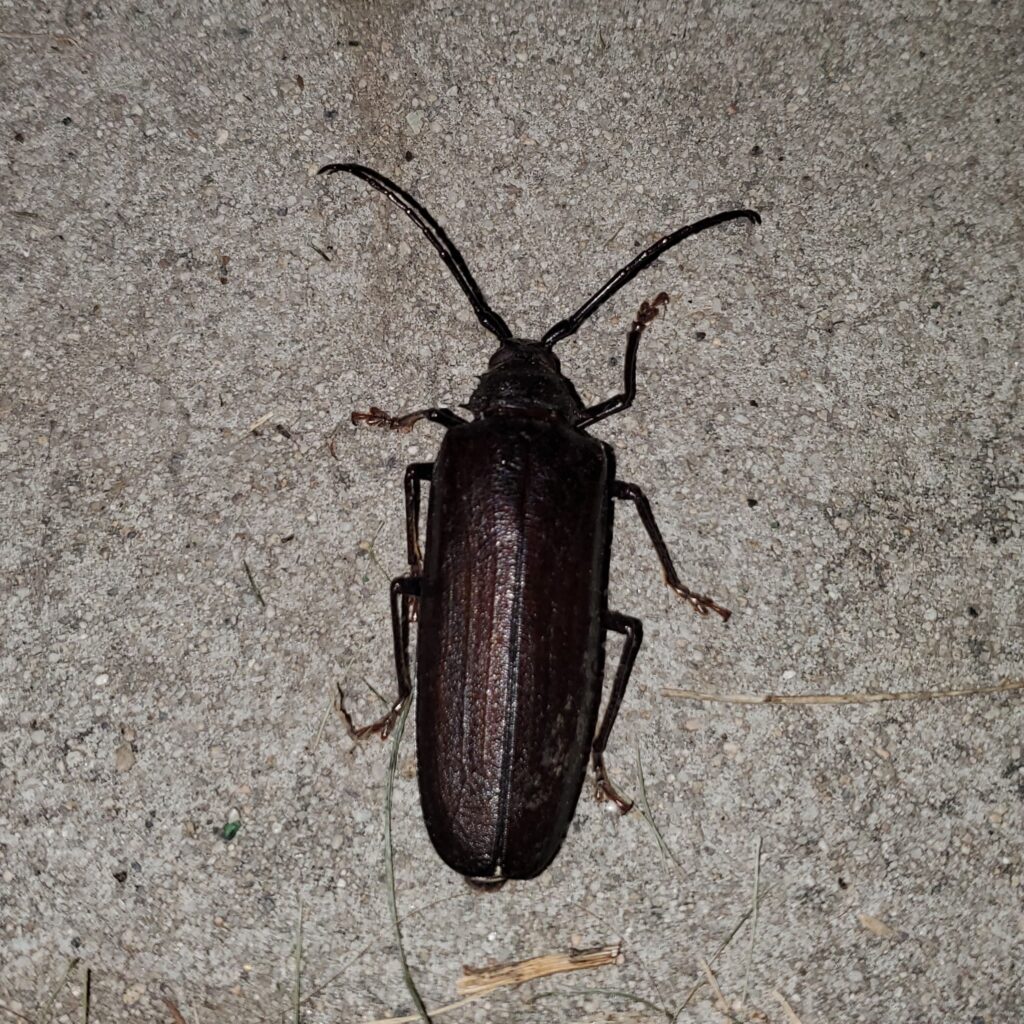
Ponderous Borer
Trichocnemis spiculatus
The Ponderous Borer can be found in forested areas of Douglas Fir (Pseudotsuga menziesii) and Ponderosa Pine (Pinus ponderosa) – its principle hosts – throughout the Rocky Mountain region. Females lay eggs in cracks of suitable logs or stumps from trees that have recently been felled or killed by fire; they do not attack live trees. The larval stage typically develops for 3 to 5 years until pupation and the subsequent emergence of the adults that garner so much attention – and at up to 3.5 inches in length, that attention is well deserved! Interesting fact: the mature larvae have gnawing jaws that inspired the invention of the chainsaw.
Stephen Gossner, August 5, 2025, Corvallis, MT
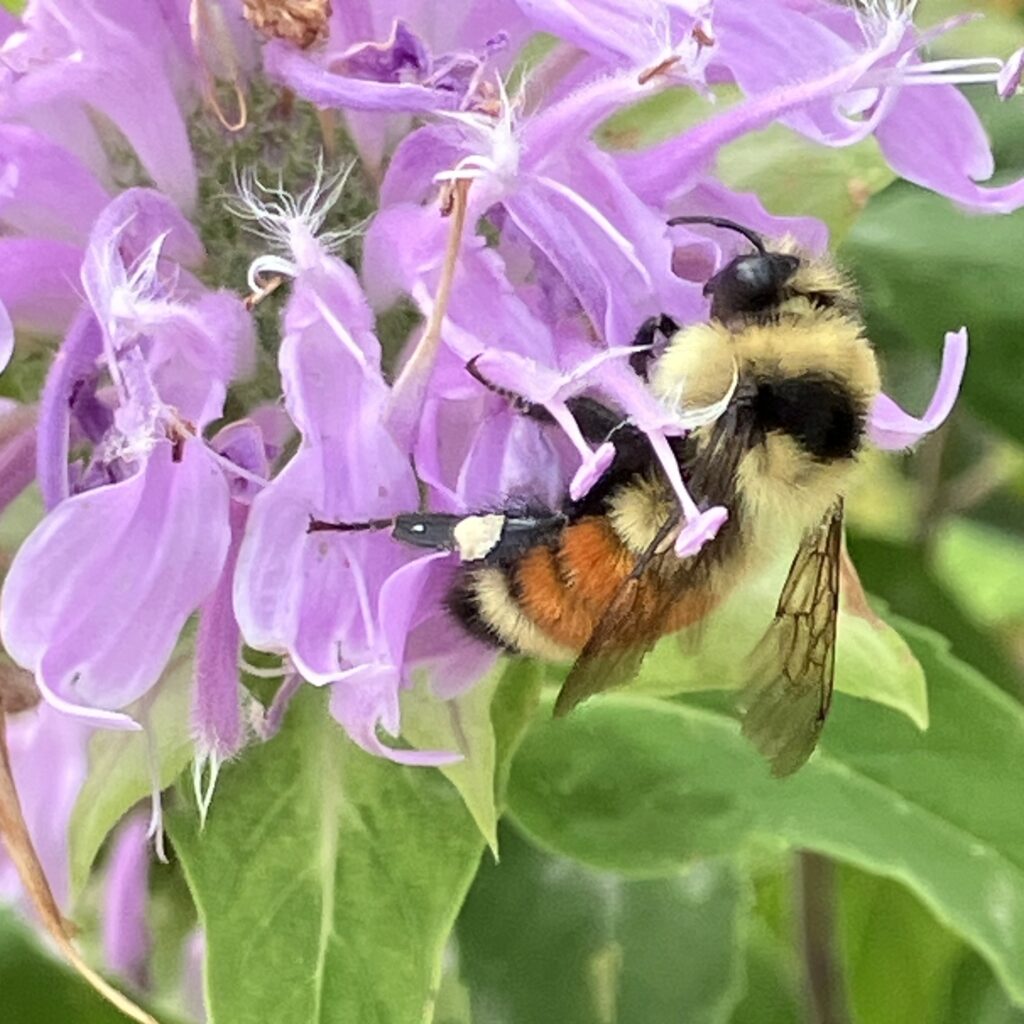
Hunt’s Bumble Bee
Bombus huntii
This handsome bumble is found across western North America, east to Manitoba, and south to Central Mexico. In its northern climes, it can be found in desert scrub habitats, prairies, and meadows. In its southern range, it is found in high-elevation pine forests, including those near the peaks of volcanoes. Like many bee species, Hunt’s Bumble Bee has experienced some population decline, but it is still one of the more common species encountered in this region.
Misty Nelson, August 6, 2025, Rocky Mountain Gardens, Missoula, MT
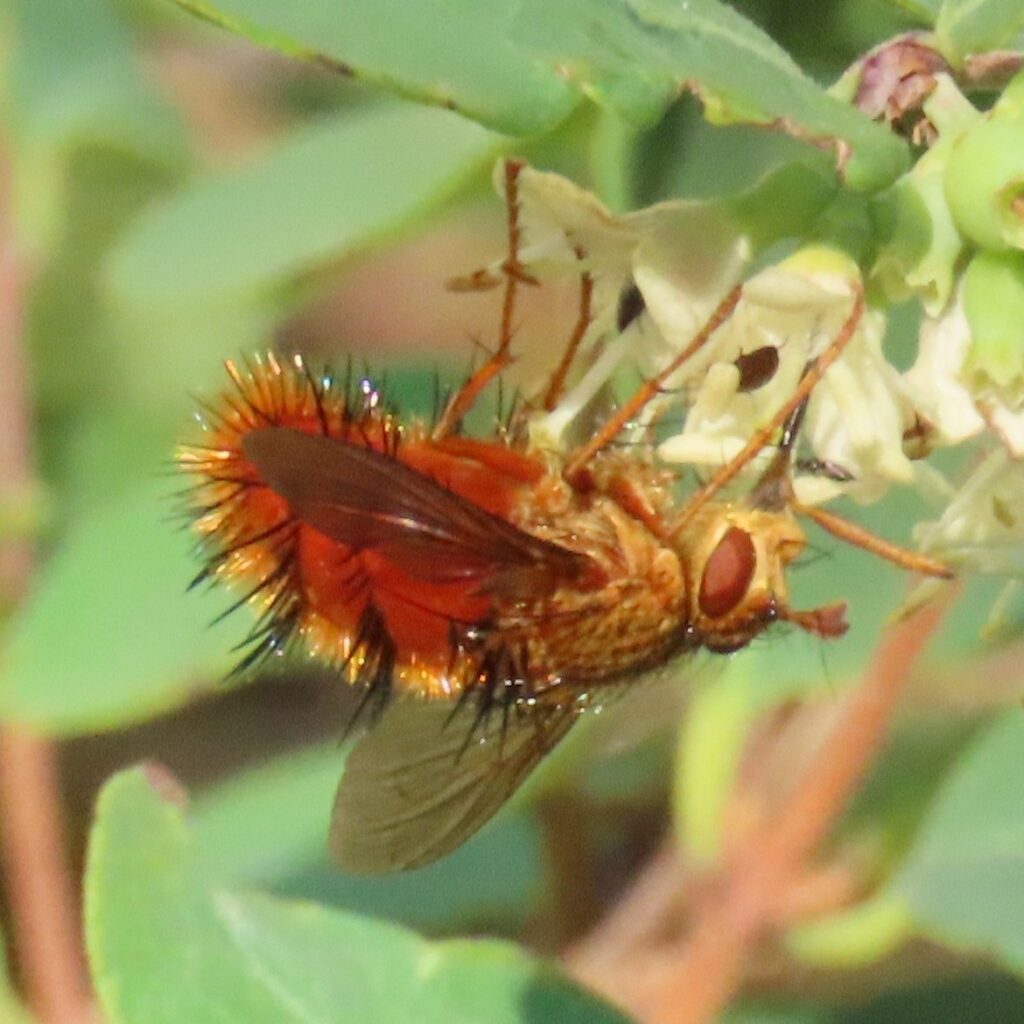
Tachinid Fly
Adejeania vexatrix
While there are over 1,300 species of tachinid flies (Family Tachinidae) in North America, and roughly 8,600 described species worldwide, there is only one species representing the genus Adejeania in our area. Although it doesn’t even have a common name, its bright orange body, black bristles arranged in rings around each abdominal segment, and unique mouthparts – with long palpi extending straight out in front of its head – are distinguishing characteristics. Little information is available about the life history of this species in particular, but tachinid flies in general are parasites and parasitoids of other arthropods. Adults primarily feed on flower nectar, and after mating, females lay eggs on or near a preferred host organism, which then serves as the food source for the developing fly larva.
Connie Geiger, August 6, 2025, Helena, MT
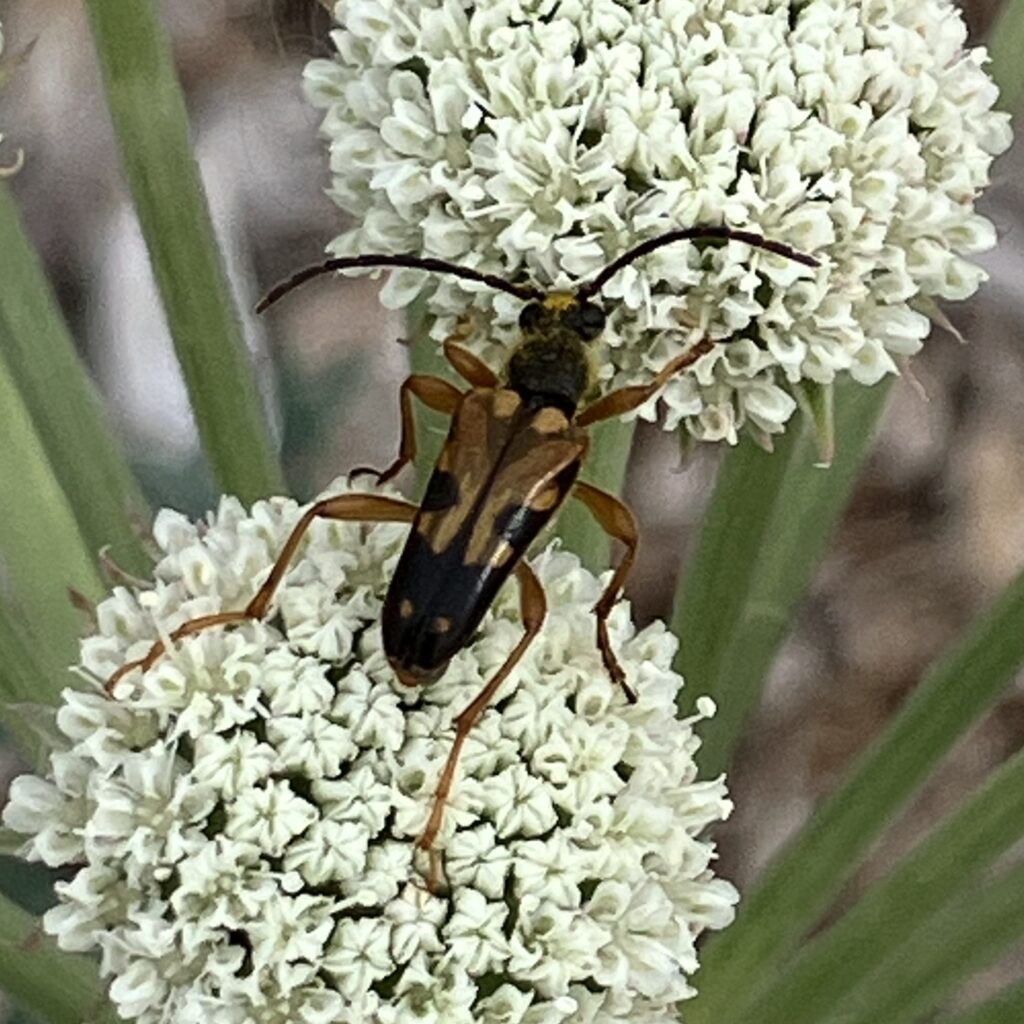
Flower Longhorn Beetle
Xestoleptura crassipes
Flower longhorn beetles (Subfamily Lepturinae) are recognized by their broad “shoulders,” long, tapering bodies, and affinity for – you guessed it – flowers. There are about 200 genera worldwide and over 1,500 described species. Larvae spend years developing underground and woodboring, feeding on decaying organic material and various hardwood species. The adults, as seen here, prefer a floral palate. Flower longhorn beetles are incredibly diverse in the northern hemisphere but are almost always recognizable by their long antennae.
Misty Nelson, August 6, 2025, Rocky Mountain Gardens, Missoula, MT